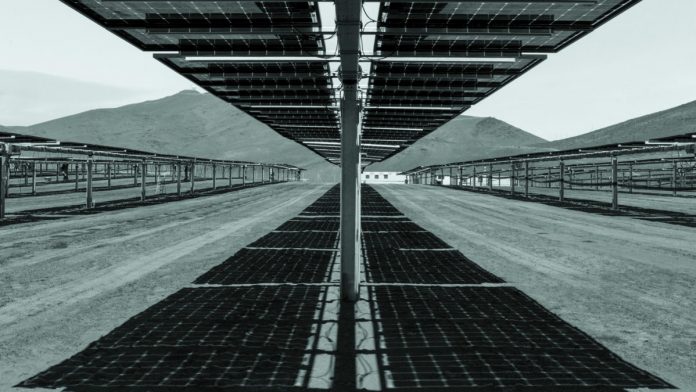A group of scientists from the Solar Energy Research Institute of Singapore has showed that combining bifacial panels and single-axis trackers is the best way to achieve the lowest levelized cost of energy in solar power projects based on crystalline silicon technology.
In the study Global Techno-Economic Performance of Bifacial and Tracking Photovoltaic Systems, published in Joule, the academics said that their tests have showed that the aforementioned combination can ensure a yield that is up to 35% higher than conventional systems.
Parameters
The group analyzed the cost-effectiveness of both monofacial and bifacial solar plants installed with fixed-tilt, single-axis, and dual-axis tracking systems on a global scale. It said that the daily average global horizontal irradiance for several of the world’s locations was obtained from NASA’s Clouds and the Earth’s Radiant Energy System (CERES).
The research team calculated direct normal irradiance (DNI) and diffuse horizontal irradiance (DHI) by applying the Orgill–Hollands’ approach, which estimates diffuse fraction using the clearness index as the only variable. Daily average ambient temperature and albedo values were also included as parameters.
Measurements
The researchers assumed that module rows in the solar plant are properly spaced so that losses caused by shading are only marginal. Their analysis did not consider shading caused by mounting systems on the panels’ rear side.
“The influence that the row-row spacing has on other cost factors, such as site preparation works, wiring, fencing, etc., has also been neglected in this work,” the researchers explained. “We do not consider governmental policies; these can have a big influence on the LCOE and therefore, determine whether it is cost effective to install a PV system in a particular location.”
Soiling losses and transport costs were also excluded as parameters for the analysis.
For projects built with fixed-tilt modules, the academics considered a height of 0.6 m between the panels’ lowest edge and ground, while for projects installed with trackers this height is assumed to be 1 m. The modules for the field measurements were provided by Chinese manufacturer Longi and a comparison was made between installations with monofacial monocrystalline PERC modules with front power output of 310 W and bifacial panels of the same type with front power output of 305 W. Inverter efficiency and other losses in the PV installation were considered to be 96% and 3%, respectively.
Single-axis primacy
“All combinations of tracking and bifacial systems improve yield, with improvements of more than 50% possible in very high latitudes,” the group wrote. “In general, with the same mounting structure, bifacial configuration outperforms monofacial configuration. Tracker configurations outperform fixed-tilt configurations significantly, with dual-axis tracker installations having marginally higher yield than one axis.”
The scientists said that single-axis tracker installations have 10% higher system costs than conventional monofacial fixed-tilt systems, while two-axis tracker installations may be between 30% and 60% more expensive. “These considerably higher system costs for two-axis tracker systems are mainly due to the high cost of their mounting structure,” the explained.
The cost and yield advantages for bifacial systems backed by single-axis tracking increase when project locations are at high latitudes.
“In general, the tracking properties from monofacial-1T systems result in a considerable LCOE reduction compared with bifacial fixed-tilt systems (reaching values up to 21%),” the scientists concluded. “However, only for locations close to the poles, the properties of bifacial modules to capture light from both sides becomes more influential and results in lower LCOE values.”
The LCOE for bifacial single-axis tracker projects is the lowest for 93.1% of the analyzed world’s land area, while monofacial single-axis tracker plants are said to achieve the second-lowest LCOE, at 87.9% of the analyzed land area.
“Hence, under the current market situation, 1T systems are cost-effective and preferable,” the academics concluded.






